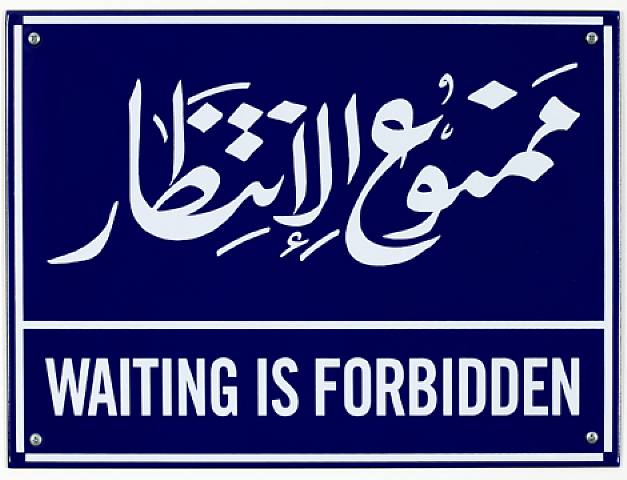Forms of compensation
Don't miss the new show at the Townhouse, put on by the art and culture magazine Bidoun. From the press release:
FORMS OF COMPENSATION is a series of 21 reproductions of iconic modern and contemporary artworks, with an emphasis on sculptures, paintings and prints by Arab and Iranian artists. The series was commissioned by Babak Radboy for Bidoun Projects and produced in Cairo by a range of craftspeople and auto mechanics in the neighborhood surrounding the Townhouse Gallery. The fabrication was overseen by Egyptian artist Ayman Ramadan, who sent installation shots of the original artwork, found for the most part in Sotheby's auction catalogues in Dubai, along with the instruction that each copy should differ in one small way from its referent. Besides this note, there was limited communication between Radboy and Ramadan, or between Ramadan and the individual fabricators. The small and often strange differences that result between the original works and their copies arise for the most part from this lack of communication, along with several conscious mediations made by Ramadan and considerations for time, labour and cost made by the fabricators themselves. All 21 pieces were completed within the space of two weeks.
 Ayman Ramadan's re-interpretation of Turkish painter Burgan Dogancay's Rings (Wall sculpture series), using plastic bracelets
Ayman Ramadan's re-interpretation of Turkish painter Burgan Dogancay's Rings (Wall sculpture series), using plastic bracelets
Of course the status of art versus its replicas has been a matter of debate at least since "The Work of Art in the Age of Mechanical Reproduction." A lot of contemporary art is simply a reflection on what constitutes art in the first place.
The curators write that:
The new works are surprising, often funny, and highly ambiguous. Despite their lowbrow fabrication, the forgeries do not simply reinforce a critique of high culture or of globalized art production. There is something uncanny about the works themselves. More clones than twins— in encountering the fakes it is the primacy of the originals, which seems somehow destabilized, not in relation to their copies, but to themselves.
That sounds like a critique to me. Of course there's something flattering in being iconic enough to be reproduced, but I read the show's take on the established and valuable works it spoofs as provocative. It's hard to see the replicas of Mona Hathoun's $25,000 "Waiting is Forbidden" sign (itself made in a workshop in Cairo, and I believe an exact replica of actual signage) and not feel one's sense of artistic (and financial) valuation go dizzy.
 Mona Hatoum's "Waiting is Forbidden"
Mona Hatoum's "Waiting is Forbidden"
In the end, I think, the show is strong because the question it investigates--what constitutes the originality and value of art--remains a powerful one. And what gives Forms of Compensation added depth, for me, is the fact that the relationship between the "copies" and the "originals," -- between commercial craftsmanship and art -- is embedded in the physical/social space of the Townhouse gallery and the surrounding workshops. The show's implications radiate outwards, from a very specific place and time and context, in a quite marvelous way.
